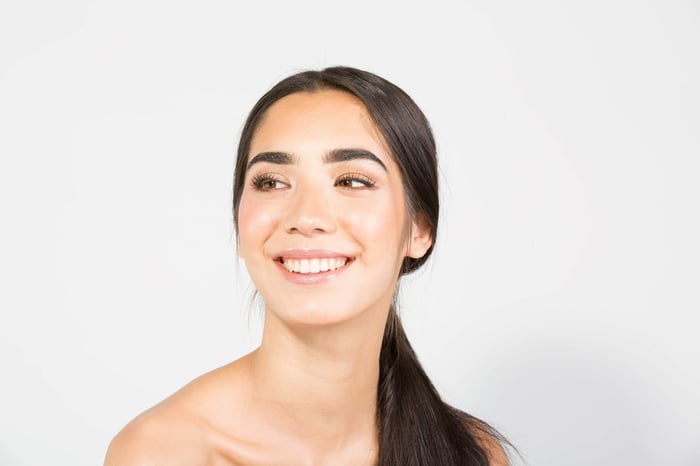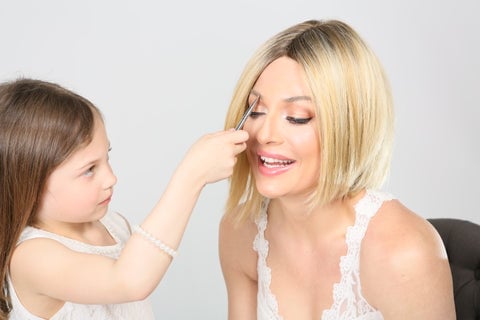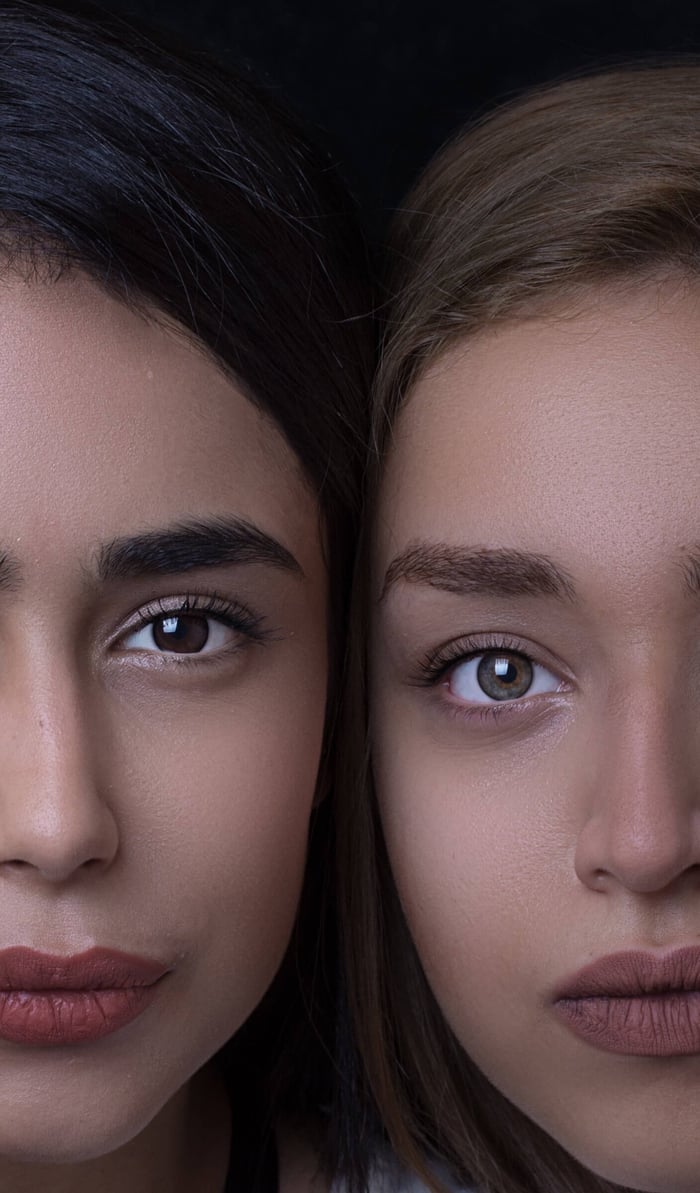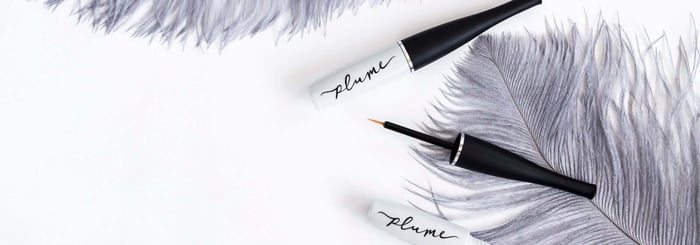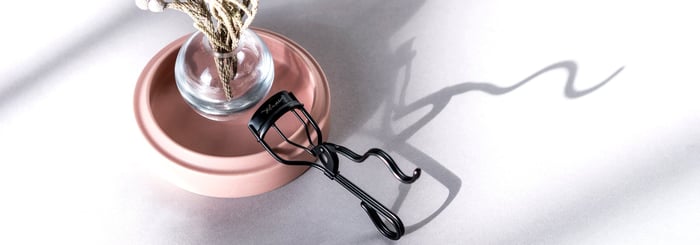(updated July 2025)
We <3 brows. And really, who doesn't?
Are you dealing with sparse eyebrows that just won't seem to grow? You're not alone. While we all dream of naturally lush, full eyebrows, the reality is that eyebrow thinning affects millions of women worldwide. Whether you're experiencing slow eyebrow growth or complete brow hair loss, understanding the root cause is the first step toward getting your thick eyebrows back.
We've identified the 8 most common reasons for poor eyebrow growth and the proven solutions that actually work to restore your brows to their former glory.
The Top 8 Causes of Eyebrow Thinning (And What Actually Works)
1. Over-Plucking: The #1 Cause of Permanent Eyebrow Damage
The Problem: This is hands-down the most common eyebrow growth problem we see. Remember those ultra-thin 90s brows? Many women over-plucked to achieve that Drew Barrymore look and never fully recovered. Over-tweezing can cause permanent damage to hair follicles, resulting in patchy, thin eyebrows that struggle to regrow.
The Science: When you repeatedly pluck the same hairs, you can damage the follicle's ability to produce new hair, creating what's essentially mild alopecia in your brow area.
The Fix: Medical-grade eyebrow serums have shown remarkable results for over-plucked brows. Our Plume Elite Medical Grade Lash & Brow Enhancing Serum contains clinically-proven peptides specifically formulated to reactivate dormant follicles. For severe over-plucking cases, this advanced formula provides 3x the concentration of active ingredients compared to regular serums.
Consistency is key: Apply morning and night for at least 8-12 weeks to see significant eyebrow regrowth.

2. Chronic Stress: The Silent Eyebrow Killer
The Problem: Stress doesn't just affect your mental health—it directly impacts your hair growth cycle. When you're stressed, your body produces excess cortisol, which pushes hair follicles into the resting phase prematurely. This means your eyebrows stop growing and start shedding at up to 10x the normal rate.
The Hair Growth Cycle Breakdown:
- Anagen (Growth phase): 2-7 years for scalp hair, 4-6 weeks for brows
- Catagen (Transition phase): 2-3 weeks
- Telogen (Resting phase): 3 months
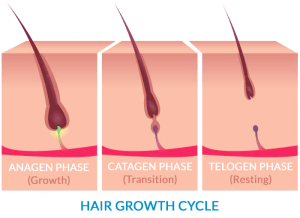
The Fix: Stress reduction techniques can dramatically improve eyebrow growth speed:
- Meditation: Studies show regular mindfulness practice reduces cortisol by up to 50%
- Exercise: Increases circulation to hair follicles and reduces stress hormones
- Adequate sleep: 7-9 hours nightly supports healthy hair growth cycles
We found this article helpful - it explains exactly how to get started and has free, easy-to-follow guided meditations
3. Nutritional Deficiencies: The Hidden Growth Blockers
The Problem: Vitamin deficiencies are often overlooked causes of slow eyebrow growth. Your hair follicles need specific nutrients to function properly, and deficiencies can halt growth entirely.
Critical Nutrients for Eyebrow Growth:
- Biotin (Vitamin B7): Essential for keratin production
- Iron: Low iron is linked to hair loss in women
- Vitamin D: Deficiency affects follicle health
- Vitamin C: Needed for collagen synthesis
- Zinc: Critical for protein synthesis in hair follicles
The Fix: Get blood work to identify deficiencies, then supplement strategically. Our Plume Elite serum also contains biotin and peptides that deliver nutrients directly to the follicle, bypassing potential absorption issues. Additional info you nay find helpful is in our blog post on lash health as well!
4. Hormonal Changes: Age, Menopause, and Thyroid Issues
The Problem: As we age, hormone levels decline, particularly estrogen and testosterone, which directly affect hair follicle activity. This is why many women notice eyebrow thinning after 40.
Common Hormonal Triggers:
- Menopause: Dropping estrogen levels
- Thyroid disorders: Both hypo and hyperthyroidism affect growth
- PCOS: Can cause hair loss in some areas, excess growth in others
- Post-pregnancy: Dramatic hormone shifts cause widespread hair loss
The Fix: While you can't stop aging, medical-grade growth serums can help combat age-related follicle slowdown. The advanced peptide complex in Plume Elite specifically targets age-related growth decline, helping maintain fuller eyebrows throughout hormonal changes.
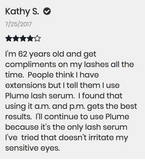

5. Post-Pregnancy Hair Loss: The 3-Month Surprise
The Problem: Postpartum hair loss typically begins 3-4 months after delivery and can last up to a year. During pregnancy, elevated hormones prevent normal hair shedding. After birth, hormone levels plummet, causing all that "retained" hair to fall out at once.
The Timeline:
- During pregnancy: Hormones keep hair in growth phase
- 3-4 months postpartum: Mass shedding begins
- 6-12 months: Gradual return to normal (hopefully)
The Fix: Our founder Lauren created the original Plume serum specifically for this issue. The new Plume Elite Medical Grade formula is safe for breastfeeding and contains pregnancy-safe peptides that help accelerate the natural hair regrowth process. You can read more about her journey to create Plume here.
Plume Founder, Lauren and her daughter Aveya
6. Environmental Factors: Weather and Lifestyle Damage
The Problem: Dry winter air, harsh weather, and environmental toxins can damage hair follicles and slow growth. You might notice your eyebrows grow faster in summer (warm, humid conditions) and struggle in winter.
Environmental Growth Killers:
- Low humidity
- Extreme temperatures
- Air pollution
- Harsh skincare products near the brow area
- UV damage
The Fix:
- Moisturize: Use a nourishing eyebrow serum daily
- Gentle cleansing: Avoid harsh scrubs near brow area
- Exercise regularly: Sweating helps flush toxins from follicles
- Sun protection: UV damage affects follicle health
7. Medical Conditions: When to See a Doctor
The Problem: Several medical conditions can cause eyebrow hair loss:
Thyroid Disorders:
- Hypothyroidism: Causes overall hair thinning, including outer third of eyebrows
- Hyperthyroidism: Can cause patchy hair loss
Autoimmune Conditions:
- Alopecia areata: Causes patchy hair loss
- Trichotillomania: Compulsive hair pulling
The Fix: These conditions require medical treatment. However, medical-grade eyebrow serums can be used alongside medical treatment to support healthy hair regrowth once the underlying condition is managed.
8. Cancer Treatment: Supporting Regrowth After Chemo
The Problem: Chemotherapy drugs target fast-growing cells, including hair follicles. This affects not just scalp hair but eyebrows and eyelashes too. Post-chemo hair regrowth can be slow and patchy.
The Recovery Process:
- Hair typically starts regrowing 3-6 months after treatment
- Initial growth may be different in texture or color
- Full recovery can take 1-2 years
The Fix: Many cancer survivors find success with a combination approach:
- Plume Elite Medical Grade Serum: The strongest formula for encouraging regrowth
- Nourish & Define Brow Pomade: Immediate color and definition while waiting for regrowth
- Patience and consistency: Medical-grade serums work, but they take time
_______________________
How to Choose the Right Eyebrow Growth Treatment
For Mild Thinning:
- Plume Lash & Brow Enhancing Serum: Daily use for gradual improvement
For Severe Thinning or Stubborn Cases:
- Plume Elite Medical Grade Serum: 3x concentration of active ingredients, clinically-proven peptides
For Instant Results While Re-Growth Takes Place:
- Nourish & Define Brow Pomade: Color and definition plus growth-supporting actives
The Bottom Line: Fuller Eyebrows Are Possible
Eyebrow regrowth is possible for most people, but it requires the right approach for your specific situation. Whether you're dealing with over-plucked eyebrows, age-related thinning, or post-pregnancy hair loss, understanding the cause helps you choose the most effective treatment.
The key is consistency and choosing clinically-proven ingredients. Our Plume Elite Medical Grade formula represents the latest advancement in eyebrow growth technology, offering hope even for the most stubborn cases.
Ready to start your eyebrow transformation? Most customers see initial results within 2-4 weeks, with full results in 8-10 weeks.


